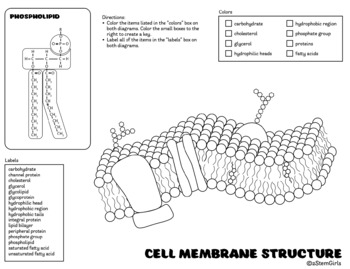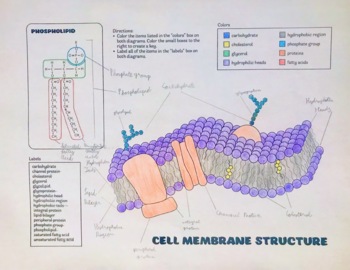Cell/Plasma Membrane Structure Color & Label Perfect for Interactive Notebooks!
2 STEM girls
178 Followers
Grade Levels
9th - 12th, Homeschool
Subjects
Resource Type
Standards
NGSSMS-LS1-2
NGSSHS-LS1-2
Formats Included
- PDF
Pages
1 page
2 STEM girls
178 Followers
What educators are saying
Very easy resource for all students to engage with. This made learning about the plasma membrane very simple!
Love this! The illustration is awesome! I used this for a review and as a test question. It's just great.
Description
Students of all ages love to color! Use this high quality color and label page for students to learn and process the structure of a cell membrane.
This resource includes:
- one 8 1/2 x 11 full page printable
Total Pages
1 page
Answer Key
Not Included
Teaching Duration
40 minutes
Report this resource to TPT
Reported resources will be reviewed by our team. Report this resource to let us know if this resource violates TPT’s content guidelines.
Standards
to see state-specific standards (only available in the US).
NGSSMS-LS1-2
Develop and use a model to describe the function of a cell as a whole and ways the parts of cells contribute to the function. Emphasis is on the cell functioning as a whole system and the primary role of identified parts of the cell, specifically the nucleus, chloroplasts, mitochondria, cell membrane, and cell wall. Assessment of organelle structure/function relationships is limited to the cell wall and cell membrane. Assessment of the function of the other organelles is limited to their relationship to the whole cell. Assessment does not include the biochemical function of cells or cell parts.
NGSSHS-LS1-2
Develop and use a model to illustrate the hierarchical organization of interacting systems that provide specific functions within multicellular organisms. Emphasis is on functions at the organism system level such as nutrient uptake, water delivery, and organism movement in response to neural stimuli. An example of an interacting system could be an artery depending on the proper function of elastic tissue and smooth muscle to regulate and deliver the proper amount of blood within the circulatory system. Assessment does not include interactions and functions at the molecular or chemical reaction level.




